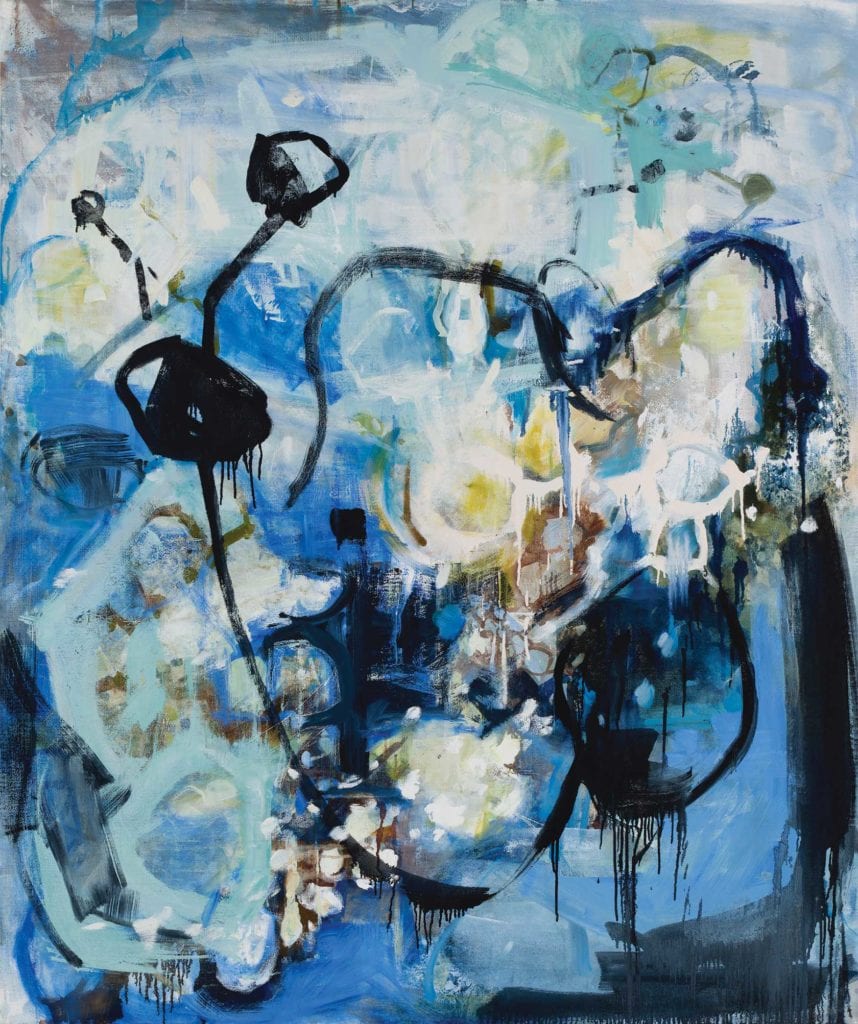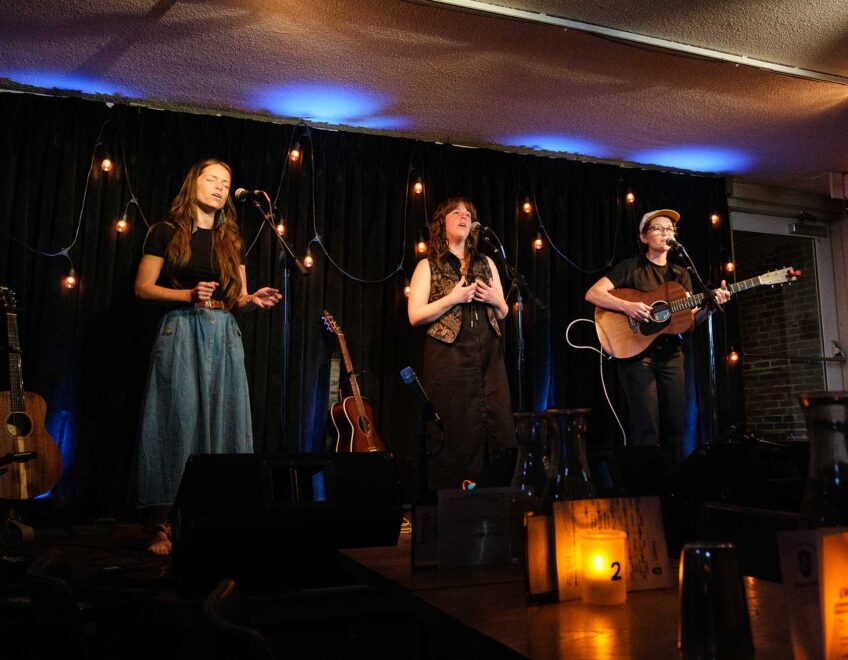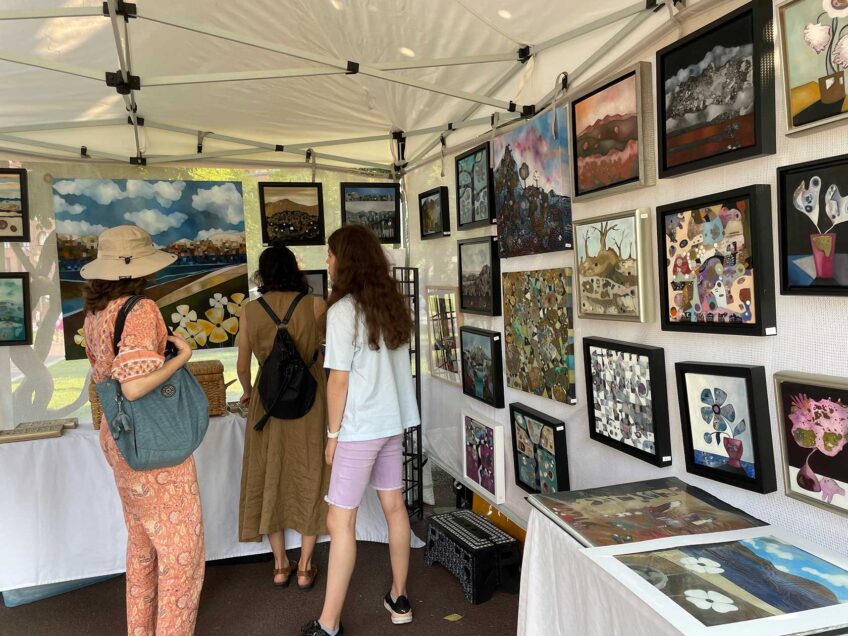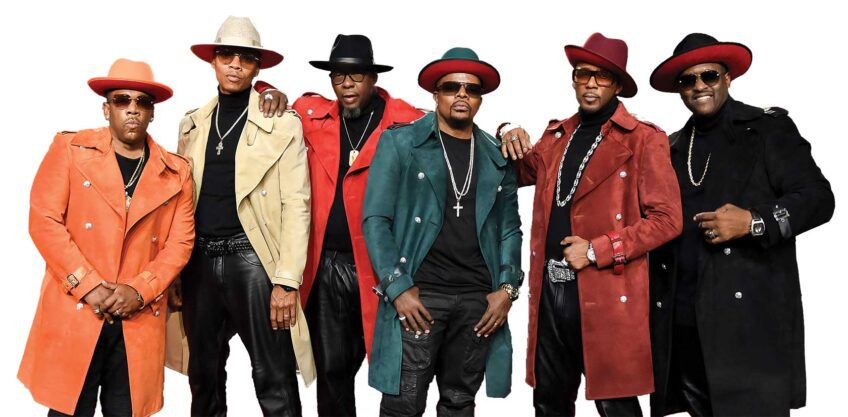
August 1 through 31, AREA CODE art fair will debut as one of the only fairs exclusively featuring contemporary artists with ties to New England. The fair will show solo artists and galleries from the region both online and in socially distanced outdoor spaces. A calendar of safe programming accompanies the month-long event, with digital art projections and pop-up art viewings.
What makes the AREA CODE Fair unique is both its focus on New England and its accessibility to artists and the public. Fair organizers aim to tear down the exclusive, hierarchal structure of most art fairs by accepting individual artists as well as galleries and nonprofits to show their work. The fair itself is also completely free to the public to view and experience.
“We decided to have the fair be a hybrid between online and offline events,” says David Guerra, the director of AREA Gallery and the creator of the fair. “The fair is basically a big umbrella for collaborations to happen.”
Online visitors can view a selection of work juried by Octavio Zaya. This will take the form of around 50 presentations, a mini-solo-show for each artist. Livestreamed performances curated by Gabriel Sosa will also screen online. On Aug. 14, AREA CODE will host an outdoor art experience at Salem State University. The evening will include projections of artworks on the side of the Salem State Arena and digital artwork curated by Leonie Bradbury and presented drive-in style in partnership with LuminArtz.
In Boston, storefronts and public spaces will be activated in partnership with Space Us as gallery walls. Juried by Jen Mergel, these presentations will feature work by MFA graduates around New England who were not able to have their institutional shows due to COVID-19. The artists were able to choose which neighborhoods their art is placed in, allowing increased access in communities that lack museums or galleries. Visitors can walk by and view the art from the street in a safe, socially distanced way. A map of the pop-up exhibitions will be live on the art fair’s website on Aug. 1.
Most works on view online and in person will be available for purchase, with prices ranging from $300–$20,000, a range meant to be approachable for a large audience. “It’s a great opportunity to start a collection or add to a collection,” says Guerra. But if you’re an art lover but don’t have the desire or the resources to be collecting art, you can still support the artists in a direct way. Every artist will have their Venmo and PayPal information on view for fair visitors who would like to support their work without purchasing a piece.
Guerra says much of the art is socially engaged. “We’re highlighting the most important issues that our society is facing today. There’s a lot on racial justice, a lot on equity,” says Guerra. Now is not the time for art to be silent, and AREA CODE Art Fair is amplifying as many socially active artistic voices as possible.
Overall, the goal is to make an art fair for everyone. And with the online and in-person hybrid, that fair will feel more intimate and tailored than most large art gatherings. “The idea is quality more than quantity,” says Guerra. “Every presentation should feel like a solo show of that artist.”









